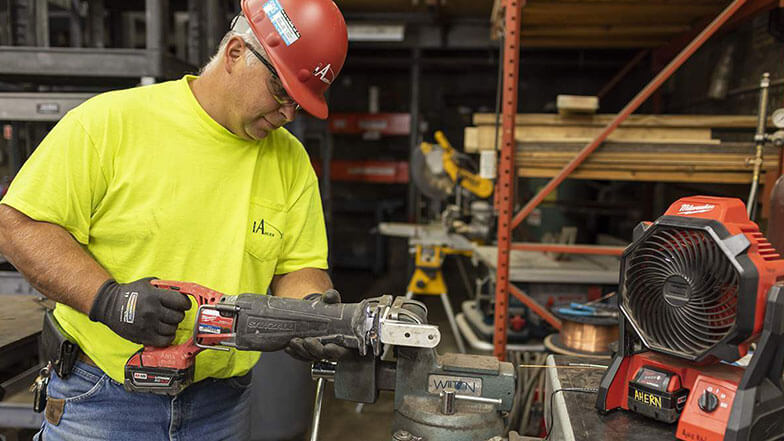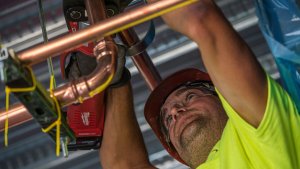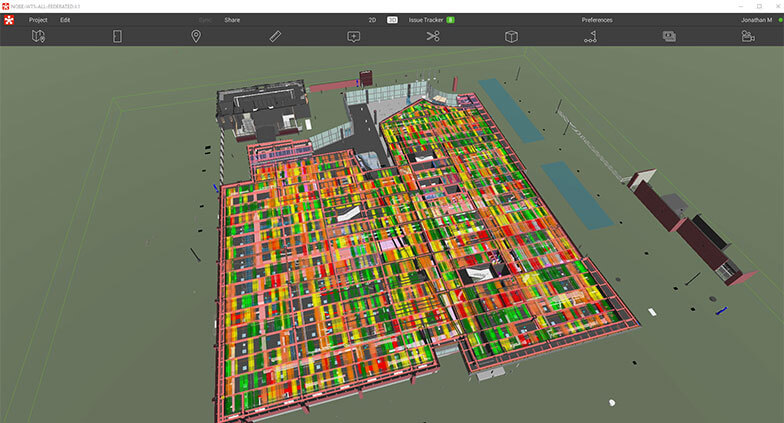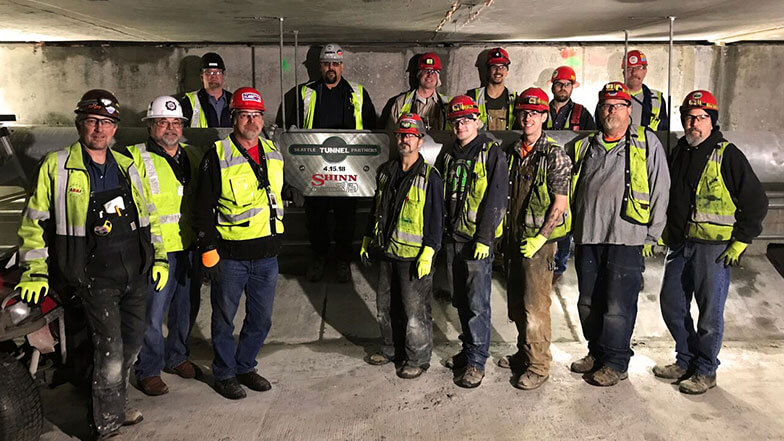Maximizing Productivity with Cordless
Using MILWAUKEE TOOL’s new line of wet/dry vacuum solutions helps Pan Pacific Mechanical better keep its workspaces clean, which enhances productivity. Pan Pacific also found the cordless vacuums safer, more versatile, and more durable than corded vacuums.
As a seasoned shop foreman at Pan Pacific Mechanical, Bryan Burch understands the importance of efficiency, productivity, and reliability in his daily operations. Burch oversees the prefabrication work at the company’s Fremont, CA, location. Prefabricating plumbing and mechanical equipment demands precision. Keeping the workspace free of copper, metal, wood, and plastic debris is crucial to maintaining organization and maximizing productivity.
Burch relied on several corded wet/dry vacuums to maintain a clean and organized space, but they came with frustrations. Managing cords became a time-consuming task, and the corded vacuums restricted reach, forcing Burch and his team to constantly seek out nearby power outlets or rely on cumbersome extension cords. Durability concerns added another layer of frustration; broken wheels and damaged cords were all too common. These challenges not only compromised efficiency but also posed safety risks, highlighting the urgent need for a more streamlined and versatile solution.
MILWAUKEE TOOL introduced a lineup of wet/dry vacuum solutions designed to alleviate these challenges. When doing research and working side-by-side with users to understand their needs and frustrations, MILWAUKEE TOOL was consistently asked to deliver a cordless solution that also addressed productivity and durability. MILWAUKEE TOOL’s new battery-powered vacuums allow professionals to tackle medium and large jobsite cleanup applications without sacrificing performance.
Already familiar with the MILWAUKEE TOOL M18™ battery system, Burch and his team decided to invest in MILWAUKEE TOOL’s jobsite cleanup expansion, purchasing the M18 FUEL™ 9-Gallon Dual-Battery Wet/Dry Vacuum. “We had already been switching over to Milwaukee for a while,” Burch explained. “We trusted the battery performance, and everything is compatible, which makes it easier.”
Cutting the Cord
“I knew there would be a benefit to having a cordless solution,” Burch noted. “No more worries about tripping over cords or having to constantly manage them. But what surprised us was the power. It matched, if not exceeded, that of the corded vacuums.”
Specifically, the vacuum’s robust suction capabilities impressed Burch, allowing his crew to tackle the diverse range of debris in the shop. “We have to suck up all different types of materials,” he explained, from fine dust particles to larger debris. This vacuum’s power remained consistent and reliable across various surfaces and applications. Moreover, the crew was impressed by the vacuum’s ability to maintain its power output during application. “There really is full power throughout the battery’s charge,” Burch attested. MILWAUKEE TOOL’s vacuum exhibited consistent suction strength from start to finish, enabling uninterrupted operation without compromising cleanup efficiency.
Transitioning to cordless was not just about ditching cords for Burch and crew; it was about embracing a new standard of performance. The cordless solution improved versatility on the job. “That’s the biggest thing,” Burch explained. “The [crew members] like the flexibility without the cord, and it gives them better access.” Plus, eliminating the cord from the unit altogether makes it a safer product, said Burch, alleviating the concern of “having someone cut the cord and get electrocuted.”
Burch estimated that nearly 90 percent of Pan Pacific’s tools are on the MILWAUKEE TOOL M18 battery system, ensuring that batteries and chargers are always within reach. “We always have easy access to a battery since it’s all compatible,” he said, noting the efficiency this step has introduced to the shop without any concerns for runtime.
Improved Durability and Versatility
The durability of their MILWAUKEE TOOL M18 Wet/Dry Vacuum was another game-changing factor for Burch’s team, often a concern with equipment subjected to the demands of professional shops. “Broken wheels and hoses or cut cords were definitely issues we had run into,” explained Burch. “If someone drops something on a cord, that cord is no good,” and the shop must either invest time in replacing a cord or buy a new unit. “For someone to spend an hour to replace a cord—it’s often cheaper just to buy an entirely new vacuum,” said Burch. Reinforced casters and crush-resistant hoses also enhance durability. Burch’s crew has not had to worry about common maintenance or unit replacements.
Frustrated by trying to fit a variety of hoses to vacuum accessories, the Pan Pacific crew relied on PVC bushings and tape to create adapters that allow accessories to fit on different vacuums. Once they adopted MILWAUKEE TOOL’s AIR-TIP™ trade-focused vacuum accessories, however, the crew was able to spend more time on other tasks. Designed for professional-grade applications, these accessories delivered extended reach, access to tight spaces, dust control, and debris agitation. “They can get to those hard-to-reach places,” which is especially beneficial in a shop that uses a variety of equipment and machinery that needs to be cleaned, Burch explained.
Burch and his team seamlessly integrated MILWAUKEE TOOL’s M18 FUEL 9-Gallon Dual-Battery Wet/Dry Vacuum into their workflow. This solution is safer and easier to use, more durable, and more versatile than the corded vacuums Pan Pacific had been using, allowing the company to increase efficiency and improve productivity.
For more information, visit www.milwaukeetool.com.













